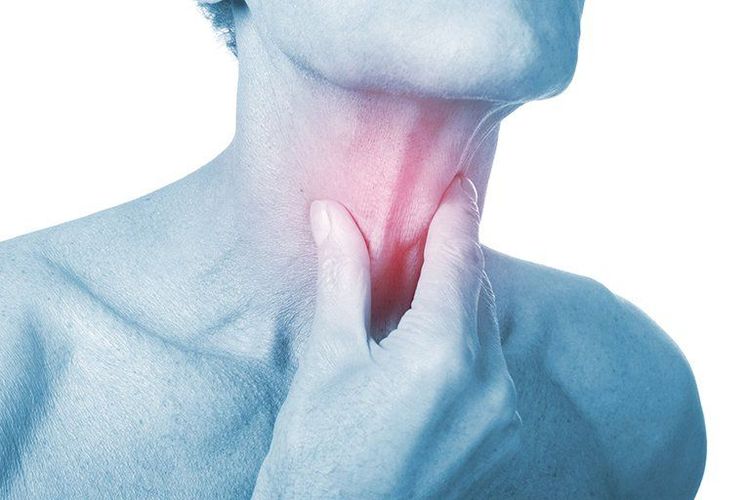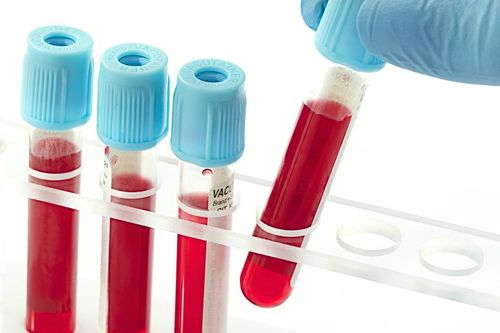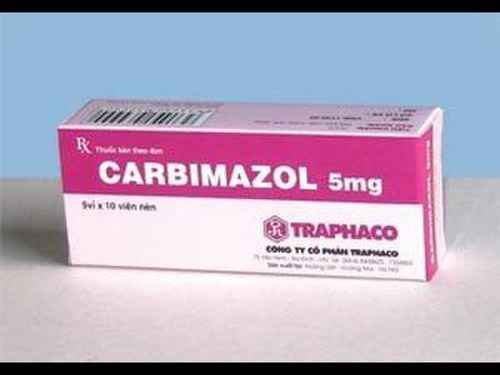This is an automatically translated article.
Posted by Resident Doctor, Master Tran Duc Tuan - Department of Diagnostic Imaging - Vinmec Central Park International General Hospital
Radiofrequency ablation (RFA) is a method of destroying tumors with heat, effective treatment and has many outstanding points in some tumor diseases such as: thyroid tumor, liver tumor, breast fibroma, ..
.
1. What is radiofrequency ablation (RFA)?
Radiofrequency ablation (RFA) is a method of destroying tumors with heat caused by the friction of ions in the tissue under the influence of high-frequency alternating current, located in the range of sound waves.
An electrode is placed in the center of the tumor and maintains a destructive temperature of 60 -100 degrees Celsius. Electric current from the machine is delivered to the tumor through a needle-shaped electrode, radio waves are transmitted to the needle tip and generated. heat. The heat caused by friction dries the surrounding tissue, leading to dehydration of the cells and coagulation of the tumor, thereby reducing the volume of the goiter.
Radiofrequency ablation is currently being used very effectively in the treatment of many diseases such as:
Thyroid tumor Liver tumor Tumor breast fibroadenoma
2. What are the advantages of high frequency ablation (RFA)?
Radiofrequency ablation (RFA) is considered a new, most modern method in the treatment of benign thyroid tumors, bringing more benefits to patients than other treatment methods:
No surgery Surgery: Limiting the risks compared to traditional surgery such as: wound infection, bleeding during and after surgery like traditional surgery. Safety : Under the guidance of ultrasound, the doctor uses a needle to precisely destroy each millimeter of tumor with heat energy from high-frequency waves. Therefore, this is the most optimal method because it preserves the surrounding healthy tissue as much as possible.
3. Radiofrequency ablation in the treatment of thyroid tumors

The process of treating thyroid tumors by radiofrequency waves is carried out in 6 steps:
Step 1: Ultrasound determines the exact location of the thyroid nodules, characteristics of the goiter, the size of the nodules and the volume of the goiter. Step 2: FNA fine-needle cell biopsy helps confirm that the thyroid tumor is benign. In some cases, your doctor will order a blood test to determine thyroid function. Step 3: Sterilize the neck area with iodized alcohol Step 4: Anesthetize the perithyroid space with Lidocaine Step 5: Burn the thyroid nodule with high-frequency waves under the guidance of ultrasound. Step 6: Rest 30 minutes before going home Radiofrequency ablation is a highly safe treatment method because it does not have to be invasive skin incision and does not require anesthesia, so the process of monitoring and re-examination after radiofrequency ablation It's also relatively simple. After radiofrequency ablation, the patient only needs to lie down and monitor for 30 minutes to 1 hour and then can go home, live and work normally, without any abstinence or restrictions. The follow-up process will perform ultrasound, color dopple and other related tests if necessary.
The volume of thyroid tumor after treatment will decrease gradually over time:
After 1-2 weeks: The size of the goiter increases slightly due to the body's natural inflammatory response After 1 month: Reduces about 50% of the volume After 3 months: 50-70% volume reduction After 6 months: 70-95% volume reduction After 12 months: Only scar tissue remains. In cases where the rate of volume reduction after 9-12 months has not been reached, it is possible to burn a second time to achieve maximum effect. After that, the patient should be re-examined once a year for 5 years.
In RFA radiofrequency ablation to treat thyroid tumors, the patient does not need to be anesthetized, only needs local anesthesia of the perithyroid space, so the patient is fully awake and able to communicate with the doctor during the treatment. treatment and did not experience anesthesia complications. Burning is done through a very small needle, so there is absolutely no scar.
Due to only selective burning of thyroid nodules, preserving the healthy thyroid gland, the patient does not have to take thyroid hormone supplements after treatment (different from the open surgery method, the patient is partially or completely removed). healthy thyroid gland leading to lifelong medication).
4. Radiofrequency ablation in the treatment of liver tumors

This is a highly technical, minimally invasive method used to treat liver tumors. Under the guidance of imaging tools such as ultrasound, computed tomography, digitized angiography, the radiologist will insert a needle that emits high-frequency radio waves into the center of the liver tumor.
Then, the tumor cells are burned with the right amount of heat, leaving the healthy liver cells and surrounding organs unaffected.
High-frequency ablation is preferred to treat masses about 3cm in size. Some patients cannot have surgery due to cirrhosis, liver failure, poor liver function, old age, or high-risk systemic disease during anesthesia and surgery.
High frequency radio waves are used to treat primary or metastatic tumors in the liver Primary tumor or hepatocellular carcinoma Metastatic tumor: there are many cancers that can spread to the liver, of which or The most common is metastasis from the colon - rectum Due to the effect of high frequency waves, the parenchyma around the needle tip will be heated and destroyed, at the same time, the small blood vessels around the tumor are also burned, Less bleeding than other methods. The tumor cells are then gradually replaced by scars. The entire intervention takes about 1 to several hours. If no further treatment is needed, the patient can return to normal life and work after a few days.
5. Radiofrequency ablation in the treatment of fibroadenomas of the breast
The doctor will use an ultrasound probe to pinpoint the exact location of the tumor and then apply high heat directly to the tumor to destroy tumor cells.
When using radiofrequency to treat fibroadenoma, only local anesthesia is required. In addition to high efficiency, this method also brings high aesthetics for women because it does not leave bad scars.
Vinmec International General Hospital is now qualified to specialize; modern medical equipment, up to international standards; professional service quality, helping to improve the efficiency of diagnosis and treatment of diseases by means of radiofrequency ablation.
In April & May 2021, when there is a need for examination and treatment of thyroid tumors at Vinmec Central Park International General Hospital and Vinmec Da Nang International General Hospital, customers will enjoy dual incentives :
- Free specialist examination and free x-ray
- Reduce 50% of costs for customers who have a prescription for post-examination treatment. The program is limited to the corresponding technique of each hospital and to customers who perform this treatment technique for the first time at Vinmec.
Please dial HOTLINE for more information or register for an appointment HERE. Download MyVinmec app to make appointments faster and to manage your bookings easily.














